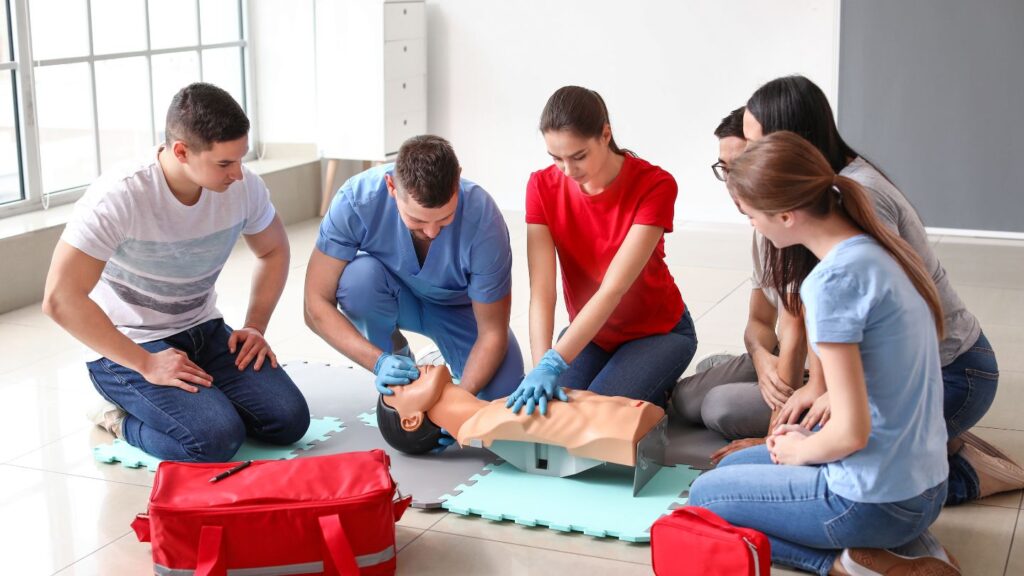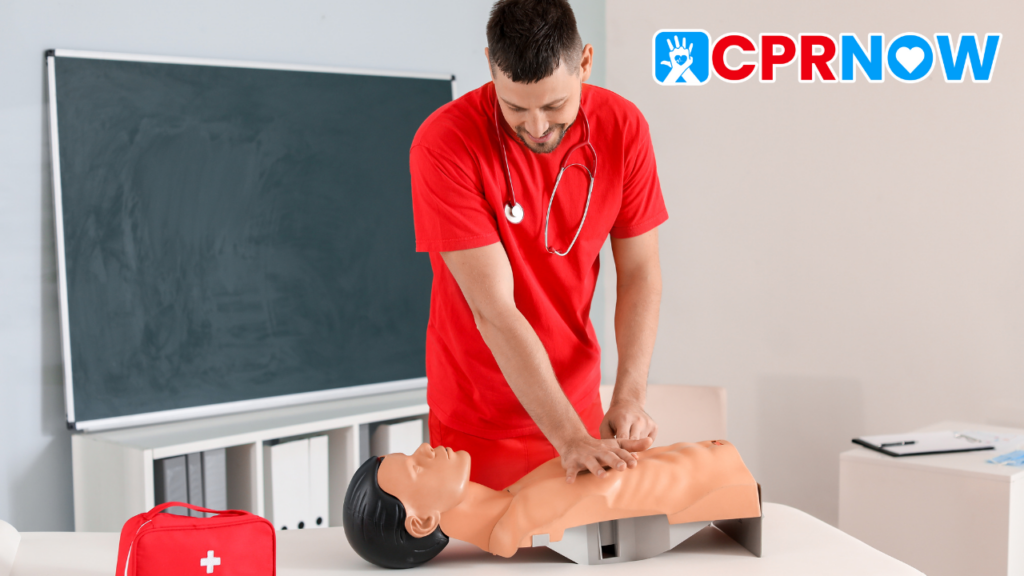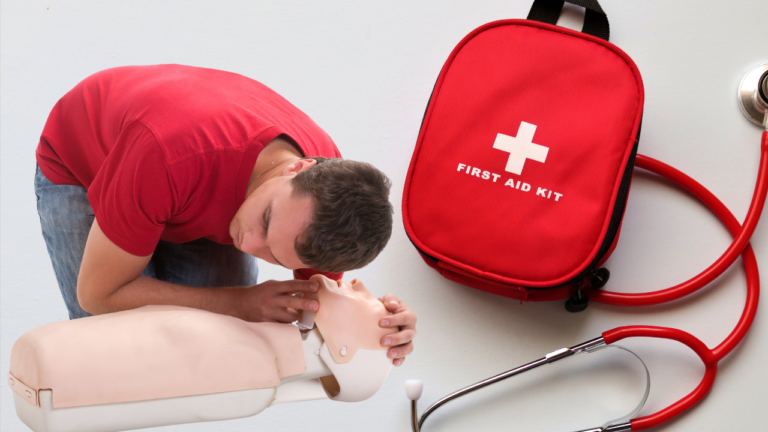Which is Better?
American Heart Association or American Red Cross

In the world of CPR training and certification, two names dominate the conversation: the American Heart Association (AHA) and the American Red Cross (ARC). While both organizations offer lifesaving education and issue CPR certification, a growing number of healthcare companies, hospitals, clinics, and urgent care centers consistently prefer American Heart Association CPR certification over other providers.
As a CPR training business coach and industry expert, I’ve seen firsthand why this trend continues to grow—and more importantly, how understanding this can help you choose the right training for your staff or career. If you’re a nurse, CNA, physician, dental assistant, or administrator wondering which CPR certification is most accepted, this guide will break it down for you.
Understanding the Differences Between AHA and Red Cross CPR Certification
Before diving into why healthcare employers prefer AHA, let’s first break down how the two programs compare.

CPR BLS Course
The AHA’s BLS CPR Course is designed for healthcare professionals and other personnel who need to know how to perform CPR and other basic cardiovascular life support skills in a wide variety of in-facility and prehospital settings.
The AHA’s BLS course trains participants to promptly recognize several life-threatening emergencies, give high-quality chest compressions, deliver appropriate ventilations and provide early use of an AED.
Our BLS CPR course is available in our Lakeland and Tampa Locations, Our Online CPR Hybrid Course or We can set up a group class at your facility.
*Make sure to enter discount code upon checkout.

CPR, AED and First Aid Course
Looking for CPR certification near you? Enroll in our American Heart Association (AHA) Heartsaver® CPR, AED, and First Aid course, designed for individuals, employees, teachers, coaches, caregivers, and anyone with limited or no medical training who needs a CPR and First Aid certification to meet job or regulatory requirements.
This comprehensive, hands-on safety training course covers essential life-saving skills, including: CPR for adult child and infant; Use of an AED (difibrilator), Choking relief technique and First Aid care.
*Make sure to enter discount code upon checkout.
American Heart Association (AHA)
Courses: BLS (Basic Life Support), ACLS (Advanced Cardiac Life Support), PALS (Pediatric Advanced Life Support), Heartsaver CPR/AED/First Aid.
Focus: Medical and clinical-based scenarios, often used in hospitals and emergency settings.
Cert Validity: 2 years.
Course Length: Varies between 2 to 5 hours depending on the format (online/blended/in-person).
Card Type: E-card or physical card issued via the AHA’s system.
Accepted By: Nearly every healthcare employer across the U.S.
American Red Cross (ARC)
Courses: Adult CPR/AED, First Aid/CPR/AED, BLS for Healthcare Providers.
Focus: General public, workplace compliance, community first responders.
Cert Validity: 2 years.
Course Length: Comparable, though some say it runs slightly shorter.
Card Type: E-card with downloadable certificate.
Accepted By: Many employers, but not always in clinical healthcare environments.
Top 7 Reasons Healthcare Employers Prefer AHA CPR Certification
Let’s explore the reasons healthcare employers—especially hospitals, skilled nursing facilities, and urgent care centers—continue to choose AHA-certified providers for staff CPR and BLS training.
1. Standard of Excellence in Clinical Settings
The AHA is regarded as the gold standard in cardiac education, especially for healthcare professionals. Its training is deeply rooted in the most recent evidence-based guidelines and is developed in collaboration with top experts in emergency cardiovascular care.
Hospitals and clinics recognize that AHA-trained individuals are receiving the most clinically relevant and medically accurate training available.
2. Mandatory by Most Hospitals and State Boards
In many regions, hospital systems, nursing schools, and medical boards specifically require AHA BLS certification. Some job applications even state “Must possess valid AHA BLS certification” instead of just “CPR certified.”
This isn’t accidental—employers know that an AHA card ensures the student has completed a rigorous, standardized training program that aligns with their medical protocols.
3. Better Alignment with Clinical Workflows
AHA courses often simulate real hospital scenarios, including:
Two-rescuer CPR techniques
Use of a bag-valve mask (BVM)
AED integration in a clinical setting
Working in teams under pressure
These are scenarios healthcare workers face daily, and employers know AHA training offers more realistic simulations and practical skills than community-focused CPR classes.
4. National Recognition and Credibility
AHA certifications are accepted nationwide without exception. This gives employers peace of mind that if an employee moves or transfers to another facility—even out of state—their certification remains valid and respected.
This isn’t always the case with other providers. Employers avoid the risk of having to retrain staff due to non-AHA certification not being accepted elsewhere.
5. Digital Verification and Card Tracking
The AHA uses eCards, a secure system that allows employers to instantly verify credentials. This makes HR and compliance easier, faster, and less prone to fraud.
Unlike some training providers that issue generic certificates, AHA cards include:
A unique eCard code
Direct employer verification links
Date of issue and expiration

Why Some Still Choose Red Cross—and the Catch
While the Red Cross is a respected organization offering CPR classes across the country, their courses are often designed for the general public rather than the clinical environment.
Their BLS course for healthcare providers has improved in recent years, but many employers still default to AHA out of tradition, trust, and strict protocol requirements. For this reason, new hires with only Red Cross CPR cards are sometimes required to retake an AHA course before their first day of work.

Save time and take CPR Online!!
Our American Heart Association Hybrid CPR course is the ideal solution for busy healthcare professionals who don’t have hours to spare. Complete the online portion at your own pace, anytime, anywhere—and then schedule a quick, in-person skills session (30 min) at our facility to finish your certification.
It’s convenient, flexible, and fully AHA-compliant—perfect for those with demanding schedules who still need to stay certified.
Offering CPR Training in Lakeland and Tampa, Florida
If you’re located in Lakeland, Tampa, or anywhere in Polk or Hillsborough County, we bring American Heart Association CPR certification directly to you. Whether you’re a healthcare facility needing group BLS certification, or a nursing student preparing for clinicals, our mobile CPR training service offers:
-
AHA BLS, Heartsaver, and First Aid/AED courses
-
On-site group training for medical and dental offices
-
Weekend and evening availability
-
Same-day certification cards
-
Flexible scheduling in Lakeland, Tampa, Winter Haven, Brandon, Plant City, and more
Get trained. Get certified. Get compliant—with the CPR certification healthcare companies trust most.

Lakeland Florida Training Center
211 E Main St, Lakeland, FL 33801 (No walk ins)



